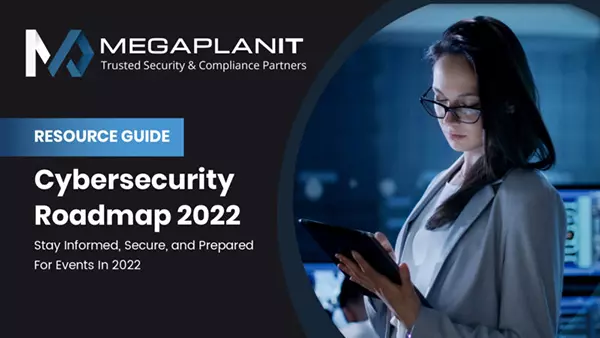Planning Ahead
A Cybersecurity Roadmap is a plan. It details priorities and objectives to drive progress towards business security goals. The roadmap should follow a data-driven path based on answers to critical questions so that organizations can rely on data rather than arbitrary vendor recommendations or the latest industry trends. This article identifies key points to consider as you jump-start this process and prepare your organization for the next wave.
Where am I today? Organizations need that situational awareness to understand the current state, compare it with business requirements, and determine the next steps. Evaluating the current state through the lens of external security and compliance requirements provides an additional viewpoint and understanding of the current state concerning external expectations and obligations.
Where do I need to be, and how do I get there? First, companies need internal baselines and trends to understand how cybersecurity has been functioning to see where it needs improvement. New security controls may require design and implementation for organizations expanding internationally this year to meet external requirements such as the General Data Protection Regulation (GDPR) data privacy and security law.
Key Elements for Success
Think strategically and start with the fundamentals. Cybersecurity does not have to be unnecessarily complex or challenging. Organizations are working with people, processes, and technology. Varying combinations of these three elements will either enhance or hinder cybersecurity capability. Decision-makers looking for a “quick win” may purchase the wrong tool or delegate responsibilities to an overstretched team that will not maintain the workload or keep pace with the growing volume of threats and vulnerabilities. For organizations with overstretched teams, it can help to take a step back and evaluate core competencies and contrast that with areas or functions that would benefit from more specialized, third-party providers. Let’s consider the following three areas when identifying priorities and objectives that will elevate the quality and effectiveness of a cybersecurity program:
Leaders and Data
People are critical to the Cybersecurity Roadmap. Individuals and teams support accountability and maintain security programs. Organizations need strong security leadership and support teams to measure, analyze, and drive the Cybersecurity Program forward. Leaders need good data. Alongside leadership, a team needs to regularly evaluate the complexity and effectiveness of cybersecurity processes, the resiliency of current business operations, usage of third-party providers, and detect opportunities to minimize bottlenecks and backlogs.
Follow the Process
A process is essentially a set of actions or steps intended to lead to a particular outcome or result. Documenting and implementing consistent processes for the first time can be challenging and can involve iterative process improvements. MegaplanIT partners with clients to evaluate existing processes and provide recommendations based on industry best practices, external requirements, and the broad experience of our consultants. In addition, our compliance services team works to understand your business and ensure that trusted advisory services and guidance are relevant to your specific business situation and vertical.
Consider implementing and enhancing processes in these critical areas:
– Data Security and Lifecycle Management
– Identity and Access Management
– Risk Assessment
– Application Security
– Security Testing (penetration tests, vulnerability scans, attack simulations)
– Workload Management (identifying functions that may benefit from a cloud migration)
Specialized skills are needed to support ongoing security testing such as penetration testing engagements. Teams need to continuously learn and improve methods to identify relevant weaknesses within an organization’s environment. When approaching security testing activities, larger organizations may have dedicated security teams with penetration testing skillsets to support periodic testing within the environment. However, companies encounter personnel and resource limitations even with an internal team. MegaplanIT’s Managed Security Services team provides security testing with valuable reports highlighting potential issues and recommending actions to remediate identified vulnerabilities within your environment.
Integrate Technology & Automation to Support Processes
Deploy Data Security Tools – As organizations live and breathe data, consider tools to sufficiently secure data and support data lifecycle requirements. Data security may involve file, disk, or record-level encryption, in addition to applications or methods designed to identify data elements and detect when it is time to archive or remove unnecessary data based on data lifecycle requirements.
Implement Centralized Identity & Access Management Services – Do you remember how long it took to find all of the user accounts needed to deactivate personnel before separating from the company? How many tools did you need to use? Having centralized visibility into identity and access provisioning functions can simplify account management, enforce compliance requirements, and streamline personnel onboarding and offboarding processes. In addition, third-party Identity Providers (IdP) can connect to existing directory-based authentication services and enforce additional requirements such as multi-factor authentication (MFA).
Use Dashboards and Reporting tools within Vulnerability Scanners – Vulnerability scans may run weekly or monthly within many organizations. Without reviewing the results and efficiently escalating high-risk issues, vulnerability scanning tools become network traffic overhead and fail to add value to the security program. Many vulnerability scanning tools include dashboards and reporting tools that can quickly present the organization’s systems and services’ current state and historical trends.
Operational Performance Monitoring – Compute services can be costly, whether you consume cloud-based services based on usage or invest in your infrastructure. Deploying tools to monitor the environment from an operational performance and capacity standpoint can provide greater visibility into unusual deviations from standard baselines. In addition, data gathered by these tools can support workload optimization decisions and lead to the more economical use of limited compute resources.
Third-party Services – With the expansion of Software as a Service and cloud-based platforms, organizations can increasingly leverage security tools and services that require less time to onboard and fewer capital expenditures. However, ongoing monitoring and investigative work can cripple an over-utilized team even with cloud-based offerings. MegaplanIT’s Managed Security Service team can help with managed EDR and SIEM service deployments take over the ongoing management of tools within an organization’s existing security stack and consolidate security events into a single platform. In addition, these MegaplanIT and cloud-based services can provide a more unified view of security tools and systems, provide centralized reporting, and simplify ongoing solution monitoring and maintenance.
Looking Ahead
Whether an organization is new to security practices or seeking to improve a mature security program, developing a Cybersecurity Roadmap can put your organization back on the right track. We must stay mindful of how security decisions will impact a business and build a case for ongoing improvements using reliable data and measurable performance. In addition, organizations need to have the right leadership team and internal and third-party support balance. At MegaplanIT, we partner with our clients to help you navigate the security landscape from a strategic and tactical perspective. Reach out to a member of our team today so that we can learn more about your goals and provide the necessary support to achieve your priorities and objectives.
Looking For A Security Service Providor? We’re Here To Help!
We look forward to talking to you about your upcoming Security Test, Compliance Assessment, and Managed Security Services priorities. Our expert security consultants and QSAs are fully certified and have decades of experience helping businesses like yours stay safe from cyber threats. Setup a time to chat with us about your biggest payment security and compliance challenges so we can partner with you to solve them!






